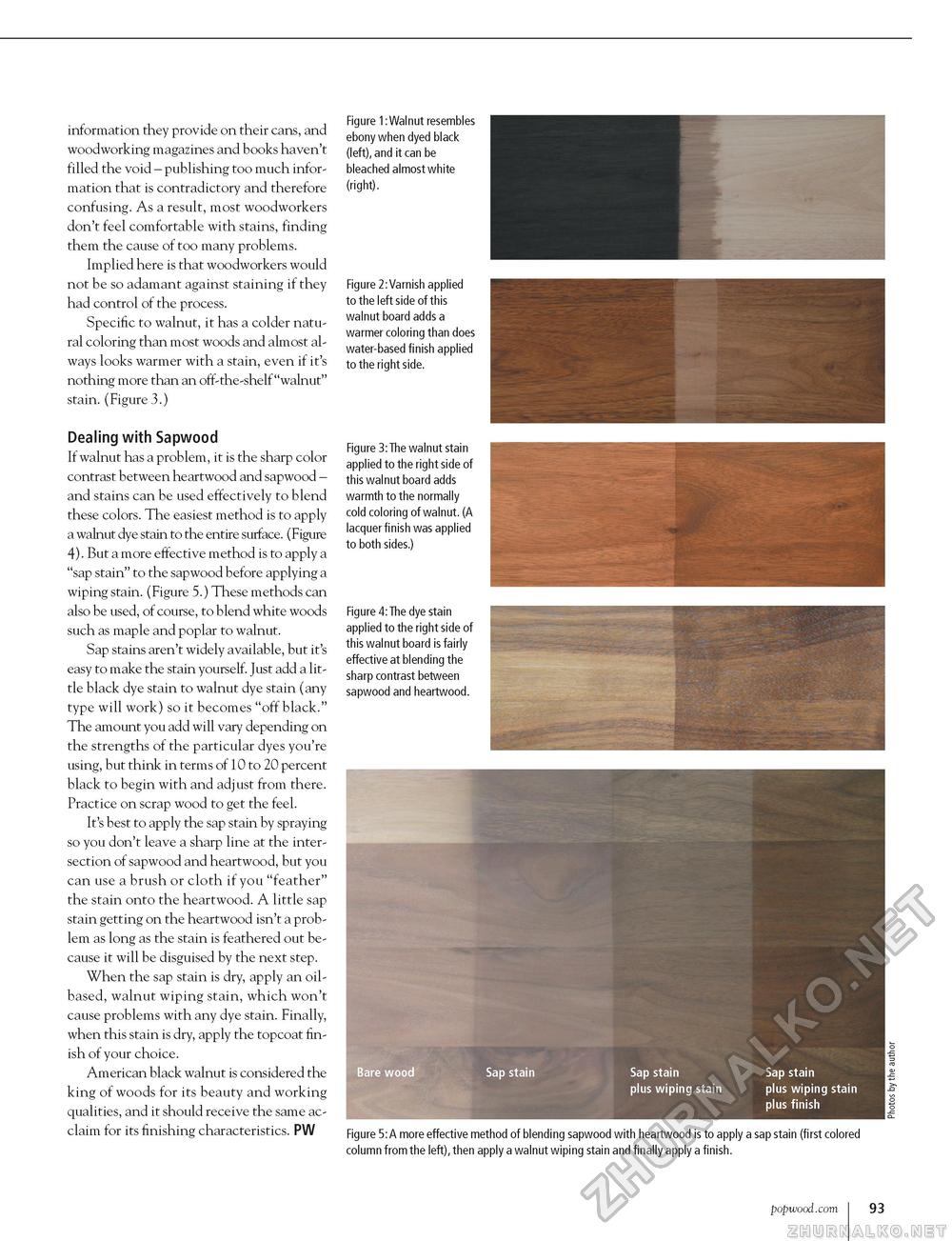Popular Woodworking 2003-06 № 134, страница 95
information they provide on their cans, and woodworking magazines and books haven't filled the void - publishing too much information that is contradictory and therefore confusing. As a result, most woodworkers don't feel comfortable with stains, finding them the cause of too many problems. Implied here is that woodworkers would not be so adamant against staining if they had control of the process. Specific to walnut, it has a colder natural coloring than most woods and almost always looks warmer with a stain, even if it's nothing more than an off-the-shelf "walnut" stain. (Figure 3.) Dealing with Sapwood If walnut has a problem, it is the sharp color contrast between heartwood and sapwood -and stains can be used effectively to blend these colors. The easiest method is to apply a walnut dye stain to the entire surface. (Figure 4). But a more effective method is to apply a "sap stain" to the sapwood before applying a wiping stain. (Figure 5.) These methods can also be used, of course, to blend white woods such as maple and poplar to walnut. Sap stains aren't widely available, but it's easy to make the stain yourself. Just add a little black dye stain to walnut dye stain (any type will work) so it becomes "off black." The amount you add will vary depending on the strengths of the particular dyes you're using, but think in terms of 10 to 20 percent black to begin with and adjust from there. Practice on scrap wood to get the feel. It's best to apply the sap stain by spraying so you don't leave a sharp line at the intersection of sapwood and heartwood, but you can use a brush or cloth if you "feather" the stain onto the heartwood. A little sap stain getting on the heartwood isn't a problem as long as the stain is feathered out because it will be disguised by the next step. When the sap stain is dry, apply an oil-based, walnut wiping stain, which won't cause problems with any dye stain. Finally, when this stain is dry, apply the topcoat finish of your choice. American black walnut is considered the king of woods for its beauty and working qualities, and it should receive the same acclaim for its finishing characteristics. PW Figure 1: Walnut resembles ebony when dyed black (left), and it can be bleached almost white (right). Figure 2:Varnish applied to the left side of this walnut board adds a warmer coloring than does water-based finish applied to the right side. Figure 3:The walnut stain applied to the right side of this walnut board adds warmth to the normally cold coloring of walnut. (A lacquer finish was applied to both sides.) Figure 4:The dye stain applied to the right side of this walnut board is fairly effective at blending the sharp contrast between sapwood and heartwood. Bare wood Sap stain Sap stain Sap stain plus wiping stain plus wiping stain plus finish Figure 5:A more effective method of blending sapwood with heartwood is to apply a sap stain (first colored column from the left), then apply a walnut wiping stain and finally apply a finish. popwood.com 93 |








